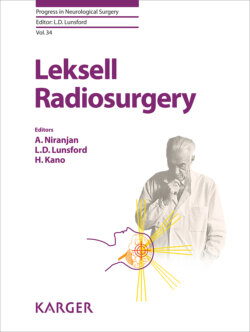Читать книгу Leksell Radiosurgery - Группа авторов - Страница 78
На сайте Литреса книга снята с продажи.
The Value of the Registry
ОглавлениеThe QI registry is extremely useful for data-driven outcome analysis. The previous version of our computer registry facilitated the publication of more than 400 manuscripts. This clinical research was instrumental in ongoing QI at our center. Our initial reports documented the outcome of radiosurgery procedures on various brain pathologies. Later, several reports were updated using a large volume of patient data and analysis of factors associated with better outcomes. Based on the results of our clinical research we gradually reduced the margin dose for vestibular schwannoma radiosurgery. This resulted in improvement of hearing preservation while still maintaining tumor control. This is one of the examples of QI based on the QI registry. Figures 3 and 4 demonstrate changes in speech discrimination scores and pure tone averages in patients who underwent SRS for the management of vestibular schwannomas. The multiple follow-up points allow for analyzing trends over time, and help better understand long-term outcomes.
Fig. 3. The registry can be used to assess the functional outcome of individual patients over time. The graph shows the change in speech discrimination score of individual patients (each line) after radiosurgery for vestibular schwannomas over multiple follow-up points following SRS.
Fig. 4. Data from the registry shows the changes in an individual patient’s pure tone average over time after radiosurgery for vestibular schwannomas.
We have used our QI registry to obtain data for specific research projects and share this with the IGKRF. For this purpose, we developed a system of data sharing under IRB oversight. Typically, for each new project data is retrieved from our electronic database and converted into a spreadsheet. This is further modified by the lead investigator who adds required parameters which need to be collected for all patients. This spreadsheet is anonymized by an IRB-approved honest broker and sent to all project-specific participating centers. Each site then enters their own patients’ data and returns their spreadsheet back to the honest broker who assures HIPPA compliance. After data evaluation and statistical analysis, the report for publications is prepared by the lead investigator and finally published in peer-reviewed journals.
The American Association of Neurological Surgery (AANS) and the American Society for Therapeutic Radiation Oncology (ASTRO) have also proposed a national radiosurgery registry [6]. This radiosurgery registry will help define national patterns of care in radiosurgery and identify gaps in treatment quality. This will also provide benchmark data and QI tools to enhance quality radiosurgery and the maintenance of certification and accreditation. Multi-institutional QA registries allow us the opportunity to evaluate collective patterns of care and outcomes. This real-world data can be used for generating robust hypotheses for randomized clinical studies [9].
